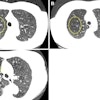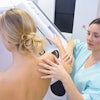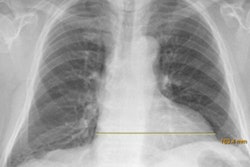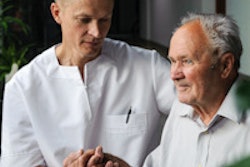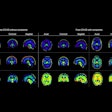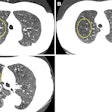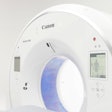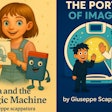
There are a great number of online educational resources available, but how do you choose which ones to trust? Where can medical students, radiology trainees, or consultants find online tutorials, radiology cases, or high-quality images? Please read below the discussion with the European Society of Radiology's (ESR) eLearning Editor Dr. Mario Maas, who also shares his views about the use of social media for radiology education and the integration of e-learning resources into the training curriculum.
ECR Today: In radiology, we are faced with a multitude of specialized referrals on a daily basis. Remembering every rare syndrome or association is impossible. Most doctors still use google, which leads them to other sites like medscape.com or the Mayo Clinic. Wikipedia is also a great free resource of usually reliable content. Which search engines do you use to look up facts quickly? How do you search quickest for reliable information?
 Dr. Mario Maas is professor of radiology at the Academic Medical Center, University of Amsterdam, in the Netherlands,and the ESR’s eLearning editor.
Dr. Mario Maas is professor of radiology at the Academic Medical Center, University of Amsterdam, in the Netherlands,and the ESR’s eLearning editor.Dr. Mario Maas: I must confess that Dr. Google is a good place to start. From here, I rapidly use PubMed for evidence-based searches. Other websites used in our department include statdx.com (with access paid for by the hospital), radiopedia.org, radiologyassistant.nl, and imaios.com. Aside from this, I keep my own PDF/Evernote library on my computer, with ebooks, articles, and notes collected by topic.
Which online radiology anatomy sites can you recommend? Are there useful revision tutorials available on the Internet? Where could you best look up very detailed bony anatomy (to describe subtle fracture lines accurately), precise brain anatomy, or look up other structures that are named in reports only occasionally?
That's a difficult question to answer; sometimes imaios.com can be useful for these kinds of enquiries, but in these situations it's also not a bad idea to turn away from the Internet and consult an old-school anatomy atlas.
Where can you find good quality images for teaching purposes or simply images to compare to a current case in medical practice? Are there any differential diagnosis sites with CT/ MRI/ultrasound images available? Which sources offer good resolution images to download?
I would say statdx.com is a very useful resource. It is a paid subscription service, which includes case example and differential diagnosis tools, and all the content is sourced from renowned radiologists. Another useful website, which offers a large database of ultrasound files, is ultrasoundcases.info and of course American Roentgen Ray Society (ARRS) Goldminer is also a good source of images.
Case-based teaching is popular among students and trainees, but qualified radiologists find it helpful to review cases as well. I remember that we used the weekly cases of AuntMinnie.com as trainees (and now there is also the AuntMinnieEurope.com site with cases available). Which case collections could you personally recommend?
Radiopedia.org is an excellent organ-oriented case collection, which is especially useful for people at the postgraduate level and radiology specialists. The ESR's own eurorad.org, which can be searched by section or by year, is actually the largest database of peer-reviewed radiological teaching cases on the Internet. It is a very wide-ranging collection, containing simple cases for medical students, everyday cases for residents in radiology, and complex cases for senior radiologists.
Online tutorials can be very helpful to gain a basic understanding or overview of topics. Newcastle University highly recommends radiologymasterclass.co.uk to their students. Some universities or lecturers have good quality websites with tutorials freely accessible, some of which are for a more specialist level like learningradiology.com. One can even find a variety of tutorials on Facebook that may be appealing. Which good quality tutorials could you recommend for medical students, just-graduated junior doctors, or radiology trainees?
I would recommend uptodate.com for tutorials that are suitable for those at every level, although a subscription is required to gain full access. Another very nice website, which offers tutorials for trainees and specialists, is radiologyassistant.nl.
Social media seem to play an ever-increasing role in our lives. How can they be used for teaching and training purposes whilst respecting patient confidentiality and consent issues?
Privacy is crucial yet challenging. This should be open for debate worldwide, and within every hospital itself. Rules and regulations concerning privacy change, not only in medicine, but also in everyday life. We are confronted with so many different platforms, and I believe that your target audience will change accordingly. With changing audiences, different aspects concerning privacy are required. Some images or cases are so rare that they cannot be anonymized.
Well-structured e-learning resources can be integrated well into undergraduate as well as postgraduate teaching and may ultimately make more efficient use of limited resources and teachers' time. How difficult is it to write your own tailored e-learning resources? Is there any helpful software or advice freely available? Which advice would you give to teachers who would like to try this out?
We have a history of developing e-learning for various levels of expertise, both in undergraduate and postgraduate teaching. We aim to provide radiological e-learning in undergraduate teaching both anatomical and pathological correlated. In postgraduate teaching, the clinical relevance of radiological signs is stressed more. We also aim to teach the postgraduate nonradiologist the basic radiological skills that are needed for daily practice but that are never taught thoroughly in medical school. The fact that radiology is almost never a key feature of medical school curricula gives rise to the need for such radiology-based postgraduate teaching for nonradiologists.
Interview conducted by Dr. Christiane Nyhsen, consultant radiologist at Sunderland Royal Hospital, U.K.; member of the editorial advisory board of AuntMinnieEurope.com; and former chairperson of the ESR Radiology Trainees Forum.
Originally published in ECR Today on 6 March 2016.
Copyright © 2016 European Society of Radiology


